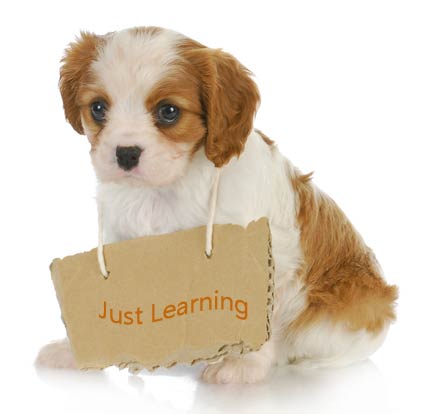Table of Contents
*This post may contain affiliate links. As an Amazon Associate we earn from qualifying purchases.

Image: wholedoguniversity.com
It was a normal day; you got up, ate breakfast, got dressed, nothing out of the ordinary so far. You were just going about your day normally when your eyes connected with those sweet puppy’s eyes. In that instant you knew everything was about to change. Before you knew it you were at home sitting on your couch staring down at this tiny puppy. I mean how hard could it be to take care of a puppy? I mean you’ve seen plenty of movies about dogs, so you’re totally prepared right? All they need is to eat, sleep, play, go to the bathroom, and repeat right? Well if you’re reading this article you’ve probably realized that that wasn’t quite the case. Don’t worry! We have researched and come up with most effective ways to potty train your puppy.
Before we dive right into the ways here are a few key things to remember as you embark on this journey of puppy potty training.
- It takes time – It won’t happen overnight! Most puppies take between 4-6 months and some will take up to a year! This varies depending on the puppy and if there are some old habits you have to break.
- Consistency is key – The only thing harder than breaking old habits is creating new ones. In order to ensure the success of your puppy’s training you must be consistent! The more consistent you are with your puppy the quicker it will be able to learn.
- Every puppy is different! – Like I mentioned earlier, every puppy is different. The amount of time it takes for your puppy to learn depends on many different factors. For example the size of your puppy! Smaller breeds will have smaller bladders which will require more frequent trips outside, this might cause more “accidents” during training!
Now that we have all of that covered! It’s time to jump into the breakdown of puppy potty training. Before you start training there are a few tools you might want to use: notepad (for record keeping), crate, leash, toys/treats.
Create a Schedule
The first thing you’re going to want to do is create a schedule for your puppy. This is key to the success of your training plan. The more consistent you are with your puppy the easier it will be for them to not have accidents. Keeping a notepad is a nice way to keep track of any accidents while also having the set schedule you created on hand just in case you forget. There are also many different apps and forms you can use to help keep track! It is also a nice way to keep organized and quickly document any signs you may see that indicate your puppy has to go. A good idea is to schedule “potty time” and feeding time right after each other. You’ll begin to make connections as you go along for example: puppy eats, puppy has to go to the bathroom. Creating the schedule at first can be frustrating and it may have to be modified a few times but once you get it down it will be a piece of cake!
Quick tips:
- Take your puppy out right away in the morning and right before they go to sleep
- Always take them out after they eat
- You should try to take them out every hour in the first couple weeks to learn their schedule
- Always take your puppy to the same spot to go to the bathroom
Be Vocal and Visual

Image: dogguru.co.nz
When you potty training you build a relationship with your puppy. This means learning their wants and needs and allowing them to learn that you are in charge. During training you will start to figure out your puppy’s body language; the things they do when they have to go to the bathroom. At the same time they will begin to learn your body language. Therefore using motions such as your pointer finger, making a clapping noise or saying the word “no” when you see them starting to go to the bathroom and then leading them outside right away will help your puppy to learn quicker!
Quick tips:
- Interrupt them during the accident rather than after. Accidents happen and you can’t allow yourself to take your anger out on your puppy.
- Be consistent with your command word or sound.
- Have patience!
Establish “Zones”
It’s important to have specific spots for things. This includes where your puppy eats, sleeps, and goes to the bathroom. Puppies will often associate smells so if they are continuously going in the same area they will begin to learn that that is where they are to go. This is also why it is important to clean up after messes right away and to clean thoroughly! If you don’t that can create a bad habit for the puppy and that might be hard to break. When taking your dog out in public you might want to keep it on a leash so that you can monitor where it is going. A crate is also a great way to allow your puppy to learn where to sleep. Your puppy will soon learn that it is it’s home which will help prevent them from going to the bathroom in their crate. Crates should only be big enough for the dog to sleep in, this is because if the crate is too big they might go to the bathroom in one area and sleep in the other. You want to prevent them from going to the bathroom in any other area than the designated “potty zones”.
Quick tips:
- When your dog is going to the bathroom in the correct “zone” you should not interrupt them. Let it be a relaxing time for your puppy.
- Reward your puppy for going in the correct “zone”, this can be by a treat or a nice walk outside.

Image: muttmanners.com
Puppy training can be hard and sometimes exhausting but as long as you stick with it you will succeed! Just remember that there might be setbacks and that’s okay! Every puppy is different and you will learn what works for you and what does not work for you. There are thousands of different methods but you will soon find which ones work for you. Rome was not built in a day and your puppy will not be trained in a day. Just take it step by step, you are more than capable of doing this!

